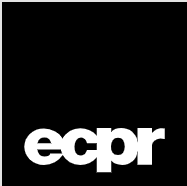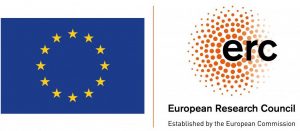
DiCED at the ECPR Joint Sessions in Toulouse
 We at DiCED are happy to share that two papers by DiCED members will be presented at workshops at the ECPR Joint Sessions in Toulouse, France (25 – 28 April 2023). Niamh Cashell will be presenting at the workshop “Social Groups and Electoral Politics: Group Appeals, Targeted Policy and Voter Responses”, and Esmeralda Bon will be presenting at the workshop “Beyond Election Campaigns: Political Parties and the Use of Digitalization in Daily Politics”. The abstracts of their papers can be found below.
We at DiCED are happy to share that two papers by DiCED members will be presented at workshops at the ECPR Joint Sessions in Toulouse, France (25 – 28 April 2023). Niamh Cashell will be presenting at the workshop “Social Groups and Electoral Politics: Group Appeals, Targeted Policy and Voter Responses”, and Esmeralda Bon will be presenting at the workshop “Beyond Election Campaigns: Political Parties and the Use of Digitalization in Daily Politics”. The abstracts of their papers can be found below.
» Ms. Niamh Cashell: Visual group appeals as a campaigning tool: a comparison of Facebook and television ads
This paper examines how groups are included in election campaign visuals across television and social media adverts. Existing literature researching the visual in election campaigns tends to focus on how individual candidates are framed, and Grabe and Bucy’s (2009) ideal candidate and populist campaigner frames remain prominent. This paper argues the need to move beyond this framework and consider new ways to study the visual in the social media era by considering how other actors and groups are used within images. In order to understand how visual communication strategies are used on social media, I will analyse television adverts as a comparison, while considering the audiences and affordances of each medium. On one hand, existing studies suggest that candidates will be motivated to appeal broadly, to reduce the chance of mistargeting and to appeal to as many people as possible (Hersh and Schaffner 2013; Somer-Topcu 2015). On the other hand, the visual offers an opportunity for candidates to include a low-risk appeal to groups because candidates can include group images to signal support, without explicitly saying this. I have developed a coding framework for content analysis to examine the type of groups used by candidates and whether targeting is explicit or implicit. Furthermore, I will evaluate whether the group appeal is meaningful depending on whether the ad includes information on a policy issue. Over the next 2 months I will apply the coding scheme to a sample of 3000 television and social media adverts of 66 Democratic and Republican candidates running for the 2020 US Senate elections. I will evaluate whether candidates consistently appeal to the same groups to build a strong base as in Raynauld and Turcotte’s (2018) study, or whether they indeed appeal broadly to capture as many voters as possible. In my presentation I will provide an overview of my coding framework, present my key findings, and use examples of candidates who are using groups in interesting ways.
- References
Grabe, M. E., & Bucy, E. P. (2009). Image Bite Politics. Oxford University Press. https://doi.org/10.1093/acprof:oso/9780195372076.001.0001 - Hersh, E. D., & Schaffner, B. F. (2013). Targeted Campaign Appeals and the Value of Ambiguity. The Journal of Politics, 75(2), 520–534. https://doi.org/10.1017/S0022381613000182
- Raynauld, V., & Turcotte, A. (2018). “Different Strokes for Different Folks”: Implications of Voter Micro-Targeting and Appeal in the Age of Donald Trump. In J. Gillies (Ed.), Political Marketing in the 2016 U.S. Presidential Election (pp. 11–28). Springer International Publishing. https://doi.org/10.1007/978-3-319-59345-6_2
- Somer-Topcu, Z. (2015). Everything to Everyone: The Electoral Consequences of the Broad-Appeal Strategy in Europe. American Journal of Political Science, 59(4), 841–854. https://doi.org/10.1111/ajps.12165
» Dr. Esmeralda Bon, Philipp Darius, Rachel Gibson, and Andrea Römmele: Data Driven Campaigning in the 2021 German Federal Election: An inter and intra-party analysis
This paper will examine the adoption of new Data Driven campaign (DDC) techniques within the German party system, and how this is affecting inter- and intra-party power relationships. While DDC is still in an early stage of development in many countries (outside of the U.S.), several key features have been defined in recent academic literature. These features include the automated collection, analysis, and application of new forms of digital data to send voters more personalised or micro-targeted messages. To date, much of the attention has focused on the external uses of DDC and particularly changes in campaign advertising transparency and the impact on voters. However, DDC is also likely to have a significant impact on parties themselves in terms of their levels of competitiveness within the party system, and their internal distribution of power. Specifically, DDC is likely to reinforce the advantage of bigger well-resourced parties who can build up their data reserves and technical expertise in targeting voters. It is also likely to affect intra-party organizational structures in terms of increasing specialisation of digital campaign expertise, and the centralization and automation of decision-making. In this paper, we examine these contentions with a case study of the German party system during the most recent Federal election. We start by contextualising the German case in the comparative literature and identifying a range of factors that constrain the use of DDC by parties. We then explore the rates, reasons and causes of adoption of DDC by a range of major and minor parties using original data collected in a post-election survey and interviews of parties’ digital campaign staff. We use these data to assess the extent to which DDC is affecting inter-party competition and to identify whether internal influencers play a role in its uptake. Our conclusions show that DDC is still relatively under-developed in Germany, that the larger parties are generally more advanced, and that the presence of pioneers interested in exploring the affordances of DDC within the party organisation influences parties’ adoption of DDC.



0 Comments